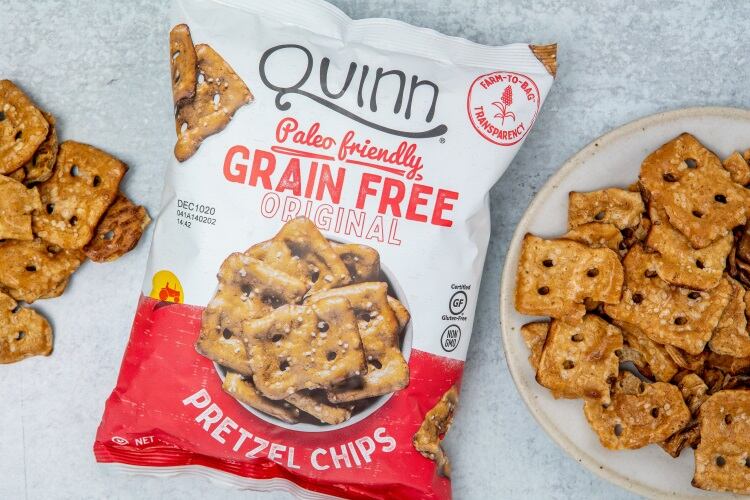Since its beginnings a decade ago, the better-for-you and better-for-the-planet snack producer has been on a mission to clean up classical snacks by leading with real ingredients, full transparency and a push for sustainability.
“Our Farm-To-Bag policy was created with the idea that transparency is the most powerful force for good in food,” said Kristy Lewis, founder and CEO of Quinn.
“When you share where every ingredient comes from, you make food differently, you make it better.
“With our new Be Better. Do Better. initiative, we are taking a stance on 99% of agriculture, and pushing it in the right direction by working with farmers to implement regenerative ag practices on their land.”
The campaign provides an opportunity for farmers to adopt regenerative practices to improve the health of their farm’s soil and integrate their crop into Quinn’s supply chain.
Only 1% of US farms are certified organic and even less are certified regenerative organic. Certifications take years to process and can be expensive, making it daunting for farmers to move to more progressive farming.
Quinn’s ‘Be Better. Do Better.’ Initiative is working directly with farmers to bridge this gap by providing an opportunity to take the first steps towards regenerative agriculture.
What’s the big deal about dirt?
Six years ago, the United Nations’ Food and Agriculture Organisation warned that the earth’s soils were headed towards complete exhaustion.
As much as 24 billion tonnes of topsoil are lost annually, estimated to take as much as 1,000 years to regenerate. More than half of the world’s soils are now classified as degraded, with approximately 1.5 billion people living on degraded land.
Soil degradation is proceeding at such a rate that the UN estimated the world may only have 60 harvests left before farmers will be unable to produce enough food for the global population, regardless of the type of seeds sown or the amount of fertilisers applied.
Soil stores 2,500 billion metric tonnes of carbon, almost twice as much as in the atmosphere and over four times that found in plants and animals.
Soils are at risk of erosion by wind and water, worsened by climate change and modern large-scale agriculture, which allows over-grazing and uses heavy machinery. Trees and hedgerows are disappearing, which is leading to the loss of critical insects.
The conversion of grassland to cropland also inevitably results in a significant loss of organic matter, resulting in carbon and nitrogen from the soil being discharged into the atmosphere in the form of greenhouse gases, carbon dioxide and nitrous oxide.
Poor soils also lead to problems with water supplies, and can affect air quality as fertilisers produce ammonia that reacts with other gases to form particles that harm the lungs.
To reverse this, real systemic change is required in the way land is managed.
Regenerative agriculture has been proven to isolate earth-warming carbon emissions from the atmosphere. The concept focuses on topsoil regeneration, actually pulling carbon out of the atmosphere and putting it back where it belongs – in the soil – which promotes vigorous and productive crop yields, improves water retention, reduces agriculture run-off, increases biodiversity and the resilience to climate change.
Practices include reduced or no-till farming, cover cropping, composting, increasing crop diversity and organic annual cropping, ant diversity and ethical grazing, also improve crop yields, naturally reduce pests, and increase the biodiversity of our ecosystems. It also includes a return to mixed farming, integrating crop production with grassland and grazing livestock, along with ethical grazing and incorporating trees, forest farming, riparian forest buffers between crops to field watersheds, and windbreaks.
Pushing for change
In June 2020, Quinn planted 85 acres of sorghum using regenerative practices on Tucker Farms in Western Nebraska.
The sorghum will be harvested and trialled for use in the company’s line of pretzel snacks. If successful, it will join a growing list of Quinn suppliers, all handpicked for attributes they bring to building a better food system.




